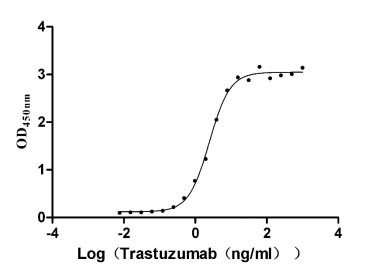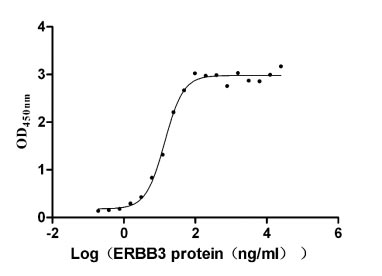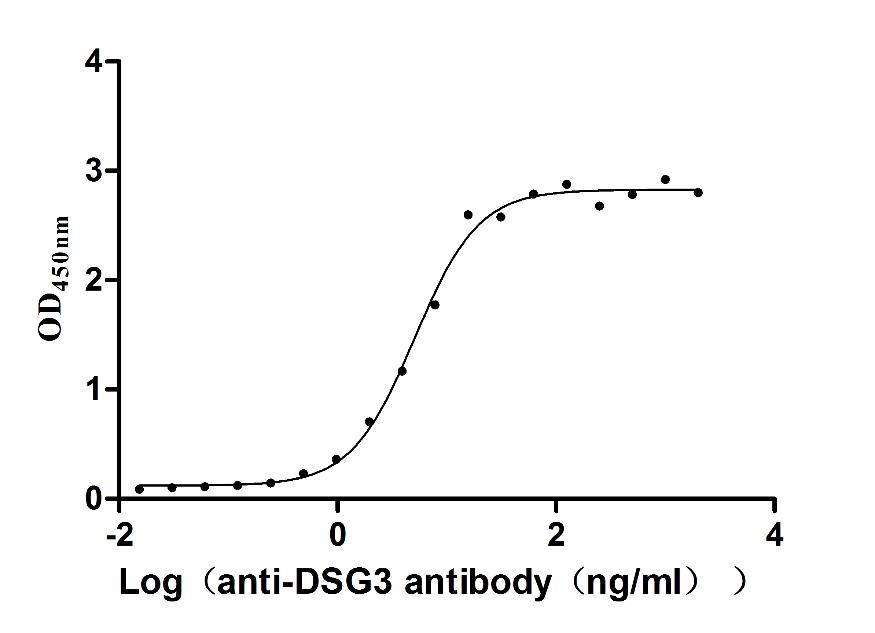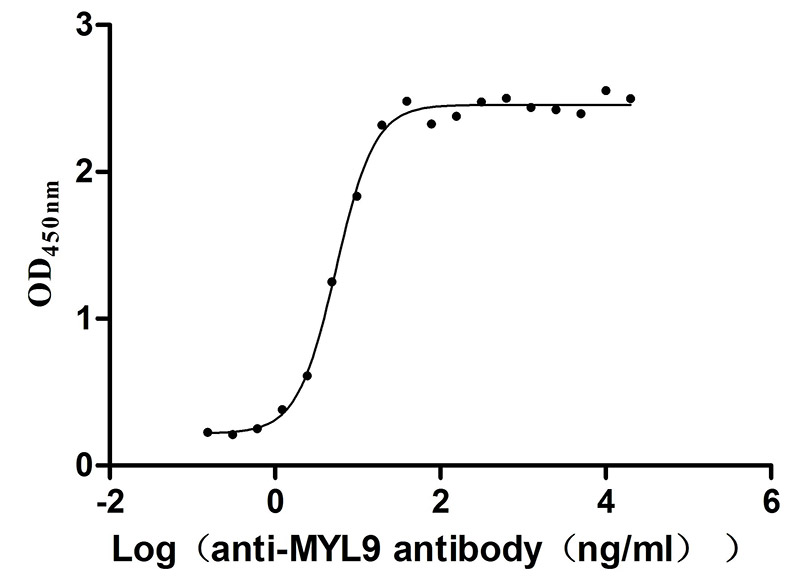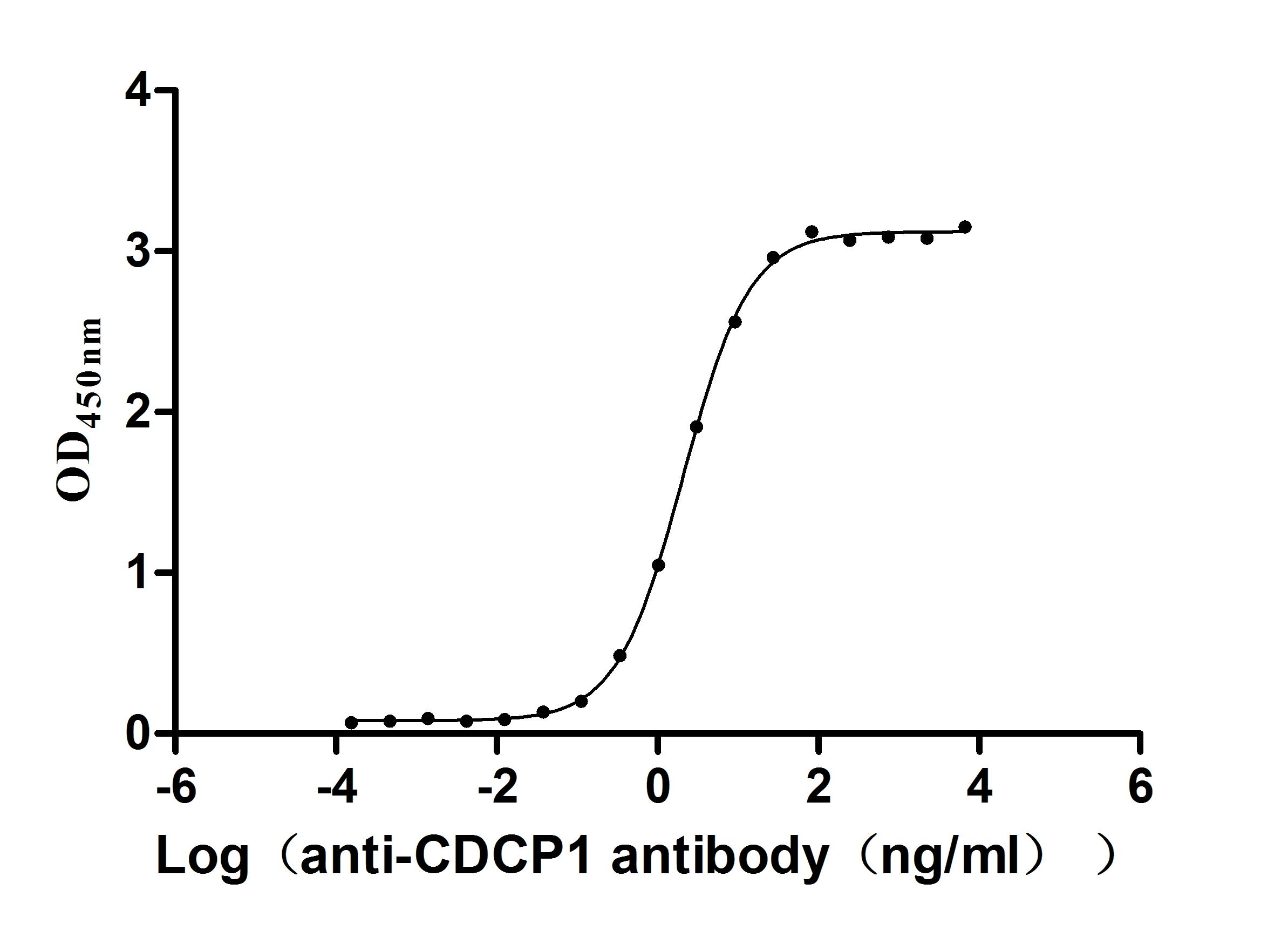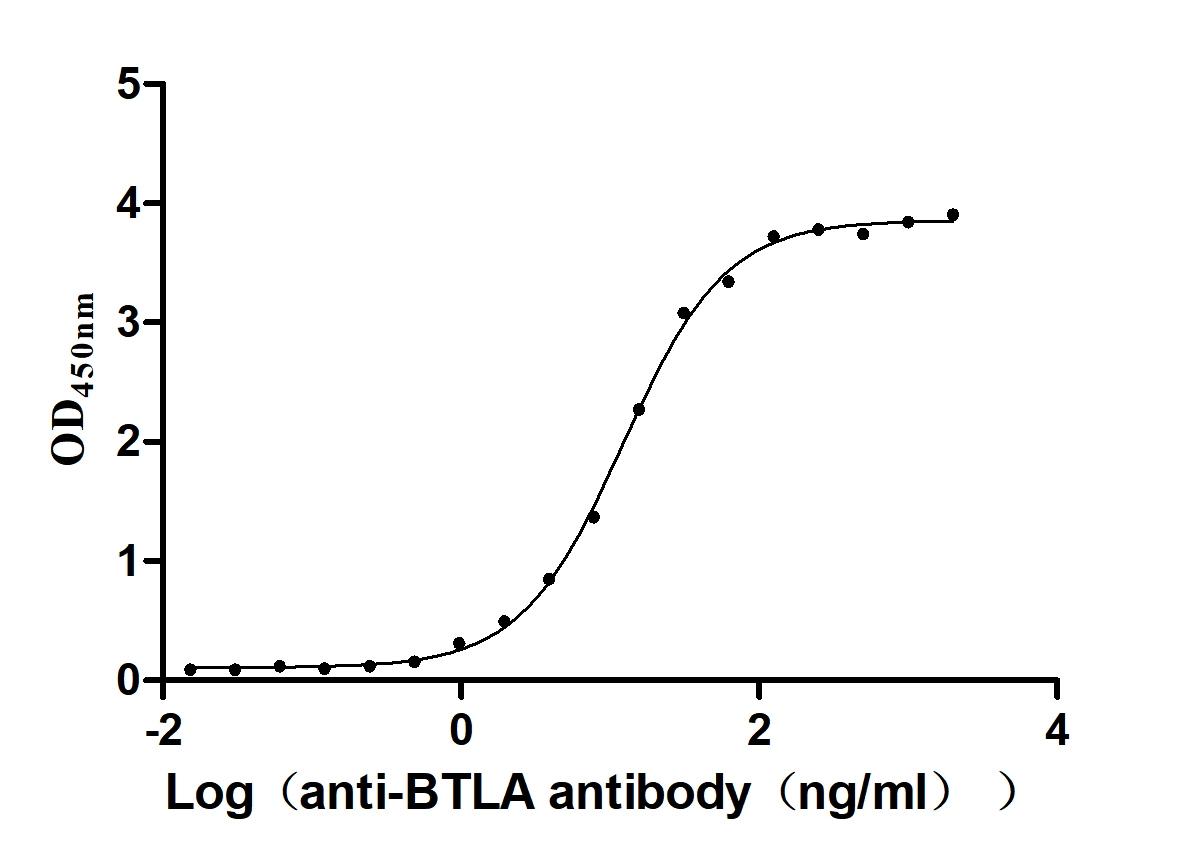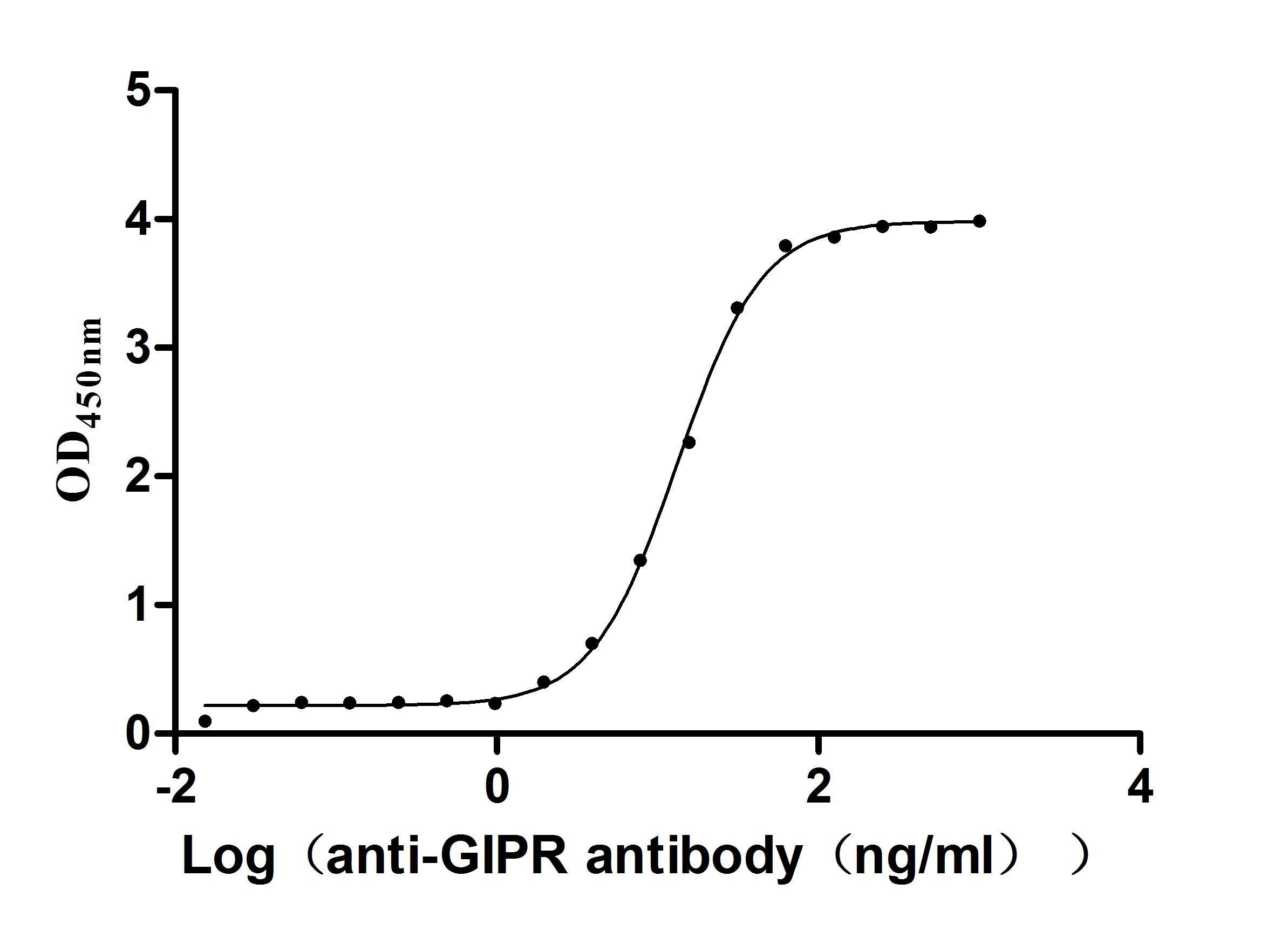Recombinant Mouse fMet-Leu-Phe receptor (Fpr1), partial
-
中文名稱:小鼠Fpr1重組蛋白
-
貨號:CSB-YP008854MO1
-
規格:
-
來源:Yeast
-
其他:
-
中文名稱:小鼠Fpr1重組蛋白
-
貨號:CSB-EP008854MO1-B
-
規格:
-
來源:E.coli
-
共軛:Avi-tag Biotinylated
E. coli biotin ligase (BirA) is highly specific in covalently attaching biotin to the 15 amino acid AviTag peptide. This recombinant protein was biotinylated in vivo by AviTag-BirA technology, which method is BriA catalyzes amide linkage between the biotin and the specific lysine of the AviTag.
-
其他:
-
中文名稱:小鼠Fpr1重組蛋白
-
貨號:CSB-BP008854MO1
-
規格:
-
來源:Baculovirus
-
其他:
-
中文名稱:小鼠Fpr1重組蛋白
-
貨號:CSB-MP008854MO1
-
規格:
-
來源:Mammalian cell
-
其他:
產品詳情
-
純度:>85% (SDS-PAGE)
-
基因名:
-
Uniprot No.:
-
別名:Fpr1; fMet-Leu-Phe receptor; fMLP receptor; N-formyl peptide receptor; FPR; N-formylpeptide chemoattractant receptor
-
種屬:Mus musculus (Mouse)
-
蛋白長度:Partial
-
蛋白標簽:Tag?type?will?be?determined?during?the?manufacturing?process.
The tag type will be determined during production process. If you have specified tag type, please tell us and we will develop the specified tag preferentially. -
產品提供形式:Lyophilized powder
Note: We will preferentially ship the format that we have in stock, however, if you have any special requirement for the format, please remark your requirement when placing the order, we will prepare according to your demand. -
復溶:We recommend that this vial be briefly centrifuged prior to opening to bring the contents to the bottom. Please reconstitute protein in deionized sterile water to a concentration of 0.1-1.0 mg/mL.We recommend to add 5-50% of glycerol (final concentration) and aliquot for long-term storage at -20℃/-80℃. Our default final concentration of glycerol is 50%. Customers could use it as reference.
-
儲存條件:Store at -20°C/-80°C upon receipt, aliquoting is necessary for mutiple use. Avoid repeated freeze-thaw cycles.
-
保質期:The shelf life is related to many factors, storage state, buffer ingredients, storage temperature and the stability of the protein itself.
Generally, the shelf life of liquid form is 6 months at -20°C/-80°C. The shelf life of lyophilized form is 12 months at -20°C/-80°C. -
貨期:Delivery time may differ from different purchasing way or location, please kindly consult your local distributors for specific delivery time.Note: All of our proteins are default shipped with normal blue ice packs, if you request to ship with dry ice, please communicate with us in advance and extra fees will be charged.
-
注意事項:Repeated freezing and thawing is not recommended. Store working aliquots at 4°C for up to one week.
-
Datasheet :Please contact us to get it.
相關產品
靶點詳情
-
功能:High affinity receptor for N-formyl-methionyl peptides (fMLP), which are powerful neutrophil chemotactic factors. Binding of fMLP to the receptor stimulates intracellular calcium mobilization and superoxide anion release. This response is mediated via a G-protein that activates a phosphatidylinositol-calcium second messenger system. Receptor for TAFA4, mediates its effects on chemoattracting macrophages, promoting phagocytosis and increasing ROS release.
-
基因功能參考文獻:
- FPR1-deficient mice showed a slight but significant decrease of demyelination in the corpus callosum and reduced glial cell activation. PMID: 28466255
- the FPR1 downstream signaling pathways were competitively inhibited by HCH6-1. Furthermore, HCH6-1 prevented pulmonary neutrophil infiltration and edema along with alveolar damage in LPS-induced ALI in mice. Our findings suggest that HCH6-1, a FPR1 antagonist, may have potential as a new therapeutic agent for treating FPR1-involved inflammatory lung diseases PMID: 28232203
- Intravital TPLSM revealed that formyl-peptide-FPR1 signaling is responsible for regulating neutrophil chemotaxis to allow migration into the necrotic area in hepatic ischemia-reperfusion injury PMID: 28062700
- Formylated MHC class Ib binding peptides activate both human and mouse neutrophils primarily through FPR1. PMID: 27907124
- Blocking of FPR1 completely abrogated the fMet-Leu-Phe-, gliadin- and synthetic peptide-induced migration. PMID: 26378785
- these results highlight the importance of FPR1 in chemotherapy-induced anticancer immune responses. PMID: 26516201
- Ovalbumininduced airway inflammation is mediated by upregulation of the TLR2/MyD88/NFkappaB signaling pathway and inhibition of LXA4R. PMID: 25760938
- Deficiency of formyl peptide receptor 1 is associated with increased inflammation and enhanced liver injury after LPS-stimulation PMID: 24956481
- these findings identify a novel role of FPR1 as pattern recognition receptors for perceiving the enteric microbiota that promotes repair of mucosal wounds via generation of reactive oxygen species from the enterocyte NOX1. PMID: 24192910
- Further, these results reveal Fpr1 as a major mediator of host commensal interaction during dysbiosis. PMID: 24034617
- The mechanism involved impaired early neutrophil recruitment to the liver with Fpr1 being sole receptor for neutrophils to sense Listeria chemoattractant signals and for production of bactericidal superoxide. PMID: 23139859
- findings may have clinical significance because current smokers and subjects with emphysema showed increased FPR expression in bronchoalveolar fluids and on peripheral neutrophils PMID: 22461430
- Neutrophil migration into the inflamed mouse colon does not depend on FPR1, but FPR1 contributes in other pathological mechanisms that are harmful during acute inflammation but are protective during chronic inflammation. PMID: 22383080
- Enteric commensal bacteria induce extracellular signal-regulated kinase pathway signaling via formyl peptide receptor-dependent redox modulation of dual specific phosphatase 3 PMID: 21921027
- Fpr1 has a role in modulation of anxiety-like behavior and fear memory by regulating glucocorticoid production PMID: 21484271
- The N-formylpeptide receptor (FPR) and a second G(i)-coupled receptor mediate fMet-Leu-Phe-stimulated activation of NADPH oxidase in murine neutrophils. PMID: 12470609
- Leukocyte antiadhesive and anti-inflammatory actions of annexin 1 involve this receptor. PMID: 12560218
- a novel TLR4-linked signaling pathway that selectively couples to the stabilization of FPR1 mRNA. PMID: 17277163
- The mechanisms through which these two small GTPases Rac1 and Rac2 mediate free barbed ends generation downstream of the formyl-methionyl-leucyl-phenylalanine receptor, was investigated. PMID: 17954607
- study found that mFPR1 is responsible for the high potency of fMIVIL and fMIFL; the ability of mFPR1 to detect bacterially derived formyl peptides indicates that this important host defense mechanism is conserved in mice PMID: 18606697
顯示更多
收起更多
-
亞細胞定位:Cell membrane; Multi-pass membrane protein.
-
蛋白家族:G-protein coupled receptor 1 family
-
組織特異性:Expressed in neutrophils, dendritic cells, microglia, spleen, lung and liver. Low level of expression in the vomeronasal organ.
-
數據庫鏈接:
Most popular with customers
-
Recombinant Human Receptor tyrosine-protein kinase erbB-2 (ERBB2), partial (Active)
Express system: Mammalian cell
Species: Homo sapiens (Human)
-
Recombinant Human Receptor tyrosine-protein kinase erbB-3 (ERBB3), partial (Active)
Express system: Mammalian cell
Species: Homo sapiens (Human)
-
Recombinant Human R-spondin-1 (RSPO1), partial (Active)
Express system: Mammalian cell
Species: Homo sapiens (Human)
-
Recombinant Human Desmoglein-3 (DSG3), partial (Active)
Express system: Baculovirus
Species: Homo sapiens (Human)
-
Recombinant Human Myosin regulatory light polypeptide 9 (MYL9) (Active)
Express system: Yeast
Species: Homo sapiens (Human)
-
Recombinant Macaca fascicularis CUB domain containing protein 1 (CDCP1), partial (Active)
Express system: Mammalian cell
Species: Macaca fascicularis (Crab-eating macaque) (Cynomolgus monkey)
-
Recombinant Human B- and T-lymphocyte attenuator(BTLA), partial (Active)
Express system: Mammalian cell
Species: Homo sapiens (Human)
-
Recombinant Macaca fascicularis Gastric inhibitory polypeptide receptor (GIPR), partial (Active)
Express system: yeast
Species: Macaca fascicularis (Crab-eating macaque) (Cynomolgus monkey)


